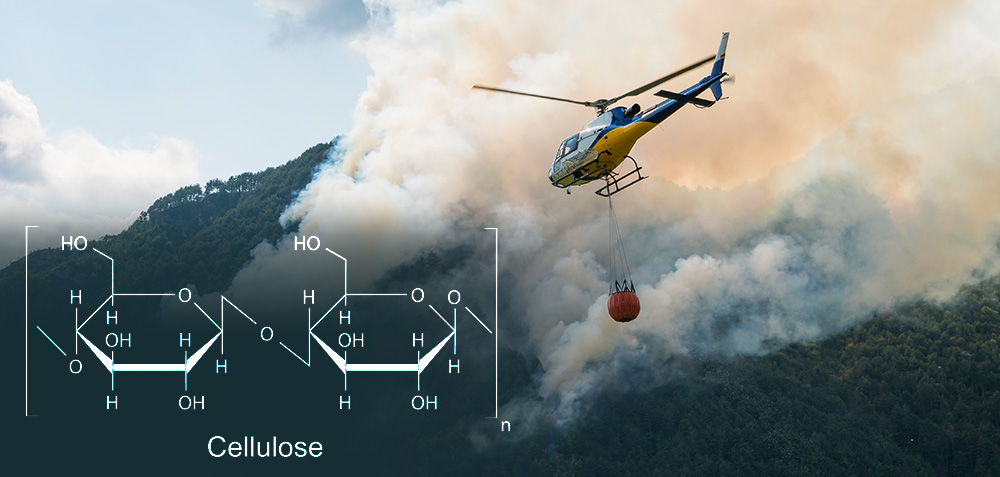
Cellulose gel holds promise to help prevent wildfires
A new gel based on cellulose – which is derived using sodium hydroxide (caustic soda), a co-product of chlorine in the chlor-alkali process – holds promise as a carrier for flame retardants in wildfire-prone areas, according to Wired (September 30). The findings are reported in the Proceedings of the National Academy of Sciences (PNAS; September 2019). Wildfires destroy millions of acres of forest each year in the United States, costing billions of dollars to suppress, and destroying the lives and livelihoods of thousands of people, note the study authors, led by Anthony C. Yu, a Ph.D. candidate at Stanford University.
The gel, which acts as a delivery medium for existing fire retardants, was developed by Stanford materials scientist Eric Appel, senior author on the PNAS paper, who has developed gels to ferry drugs into the human body. The new research was suggested by Appel’s brother-in-law, Jesse Acosta, a former fire prevention forester in Hawaii, and now at Cal Poly San Luis Obispo, writes Wired.
Appel is quoted by the newsletter as saying that the engineering requirements for delivering a drug in a body for a very long period of time are similar to those for maintaining a fire retardant on target vegetation for months. “It needs to be safe, it needs to be totally non-toxic, it needs to not harm the function of the thing you’re encapsulating.”
The gel can “coat vegetation with flame retardant, and keep it there for the whole fire season,” according to Wired; “if adopted widely (Appel has founded a startup to commercialize it) the gel could become a sort of vaccine against wildfires, applied around the roads and utility infrastructure where 84 percent of California’s 300,000 fires in the last decade have ignited.”
In tests, a utility pole was treated with the viscoelastic fire retardant fluid and subjected to controlled burns, says Wired; the treatments protected the pole from fire damage. Various pilot-scale test burns (movies S9-S13) also provided compelling evidence of the success of this approach.
The gel’s main components are cellulose polymers (derived from plant material) and colloidal silica particles, which are chemically identical to sand, explains Wired. “What happens is the polymers cross-link between the particles – I often refer to it as sort of a molecular velcro,” says Appel. The polymers build bridges between the particles, creating a gelatinous structure.
“The lifespan of the gel fits in perfectly with California’s unique brand of fire problem,” says Wired. The biggest fires typically occur in the fall before the first rains, when seasonal wind speeds are high. Wired concludes, “The idea with the fire-retardant gel would be to spray before the summer and forget about it. Only a good rain will wash it away, and as soon as that happens you don’t need the gel anymore because the vegetation is now well hydrated.”
